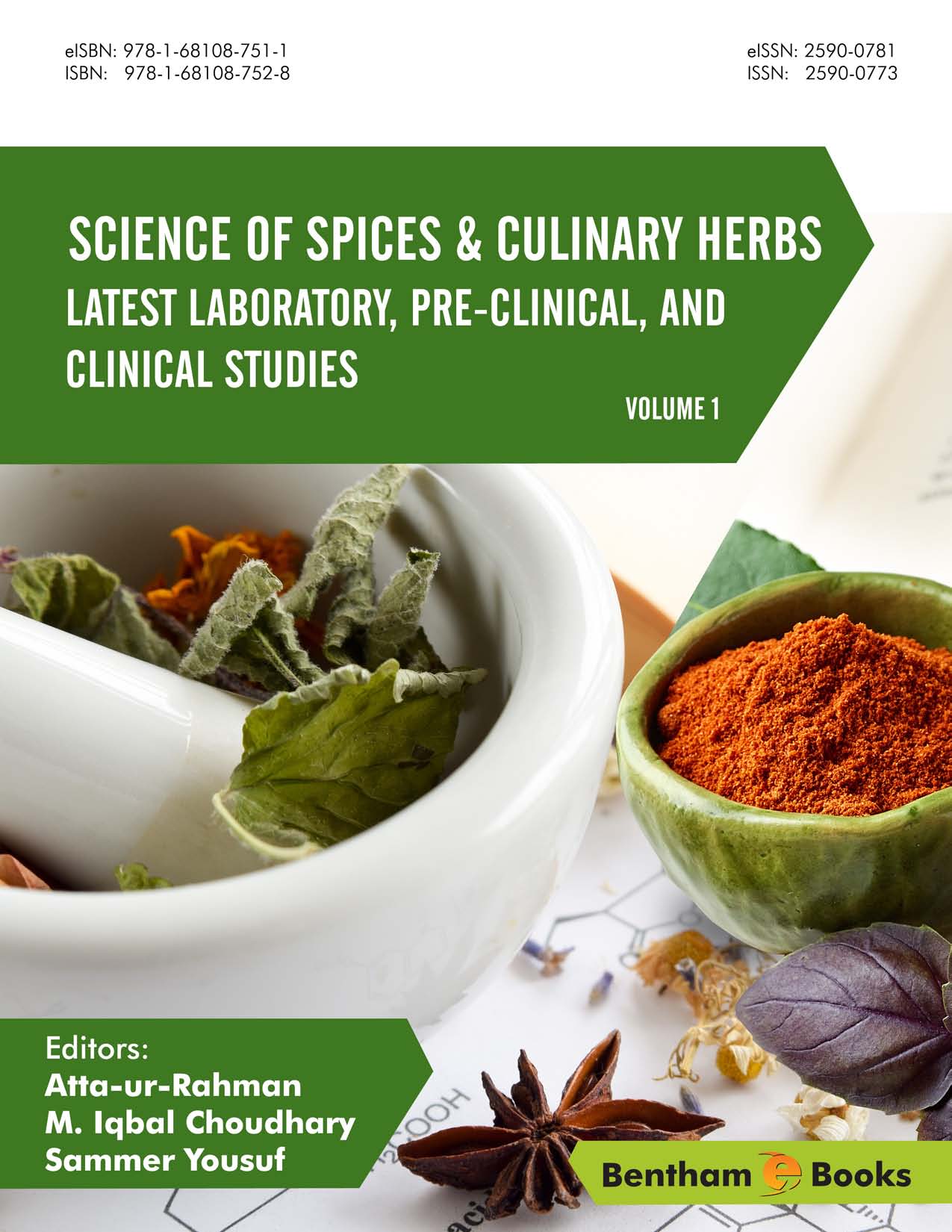Herbs and spices have been used by humans since centuries. Apart from their culinary, recreational, and aromatic values, many of them have been used for medicinal purposes. Spice trades have played an important role in the spread of religions, political influences and colonization. Culinary herbs and spices are integral part of various traditional systems of medicine and cultural practices, including ancient Egyptian, Chinese, Ayurveda, and Greeco-Arab systems. Many of them are used in indigenous medicines and home remedies.
Ethnobotanic uses of spices, including anti-inflammatory, anti-diabetic, promoters of cardiovascular health, anti-aging, pain relieving, and aphrodisiac are very well known. More recently, a lot of scientific work has been conducted to validate the ethnobotanic uses of spices, as well as to identify their new uses. Mechanism of actions of many secondary metabolites, obtained from spices and culinary herbs, have also been deciphered in the recent scientific literature. With the growing interest in natural products, spices have received major scientific and commercial interest. Their dietary origin and safety profile make them especially attractive for therapeutic and nutraceutical development. Global interest in spices in health and economy are thus driving huge scientific R&D all over the world.
The book series entitled, “Science of Spices and Culinary Herbs - Latest Laboratory, Pre-Clinical, and Clinical Studies” is an attempt to provide the much needed comprehensive literature reviews and critical analysis of extensive research work currently being conducted on common spices, and herbs. Carefully chosen articles in the first volume of the book series are focused on two globally common spices, saffron and turmeric, and their key constituents. Eight scholarly written articles by leading experts, encompass key research and development studies on these two spices, including ethnobotanic uses, and pre-clinical and clinical studies.
Emami et al., have contributed a comprehensive review on ethnobotanic and scientific studies on saffron (Crocus sativus L.) and its constituents. The chapter written by Boskabady et al., focuses on the effect of saffron on respiratory diseases, along with phytochemistry and clinical evidence.
Turmeric has long been used for anti-inflammatory effects in various traditional systems of medicine. Krishnapura Srinivasan has written an excellent review of nutraceutical and therapeutic properties of turmeric (Curcuma longa L.). On the same theme, Singh et al., have focused on the recent work on anti-bacterial and anti-cancer properties of turmeric and its most important constituent, curcumin, one of the most studied natural products. Karunaratne et al., have contributed a chapter on various strategies for enhancement of bioavailability and bioactivity of curcumin in pre-clinical and clinical trials. The review by Wissam Zam is focused on the effect of curcumin on the diversity of gut microbiota, and related diseases. Farzaei et al., have written a comprehensive review on the clinical studies on turmeric and its key constituent curcumin in anti-inflammatory diseases. Last but not least, Goyal et al., have provided an excellent overview of pre-clinical and clinical studies on turmeric and curcumin, with reference to a broad range of diseases.
The above-cited reviews cover over 960 references for scientific studies on these two key spices. This illustrates the overwhelming scientific and general interest in the field and firmly establishes the need for a book series which provides state-of-the-art reviews to the readers.
We are most grateful to all contributors for their excellent reviews and critical analysis of the recent literature, and for timely submissions of their chapters. We would like to express our gratitude to the excellent coordination of Ms. Fariya Zulfiqar (Manager Publications), Mr. Mahmood Alam (Director Publications), and the entire production team of Bentham Science Publishers for the timely completion and release of the first volume of this important book series. We sincerely hope that this new book series on the most important dietary and medicinal natural products will contribute to a better understanding of the subject and contribute towards further research and development in this field.
Prof. Dr. Atta-ur-Rahman, FRS
Kings College
University of Cambridge
Cambridge
UK
Prof. Dr. M. Iqbal Choudhary
&
Dr. Sammer Yousuf
H.E.J. Research Institute of Chemistry
International Center for Chemical and Biological Sciences
University of Karachi
Karachi
Pakistan

